
Ultimate Roaster Portable BBQ Guide: Field-Tested Picks for Every Adventure
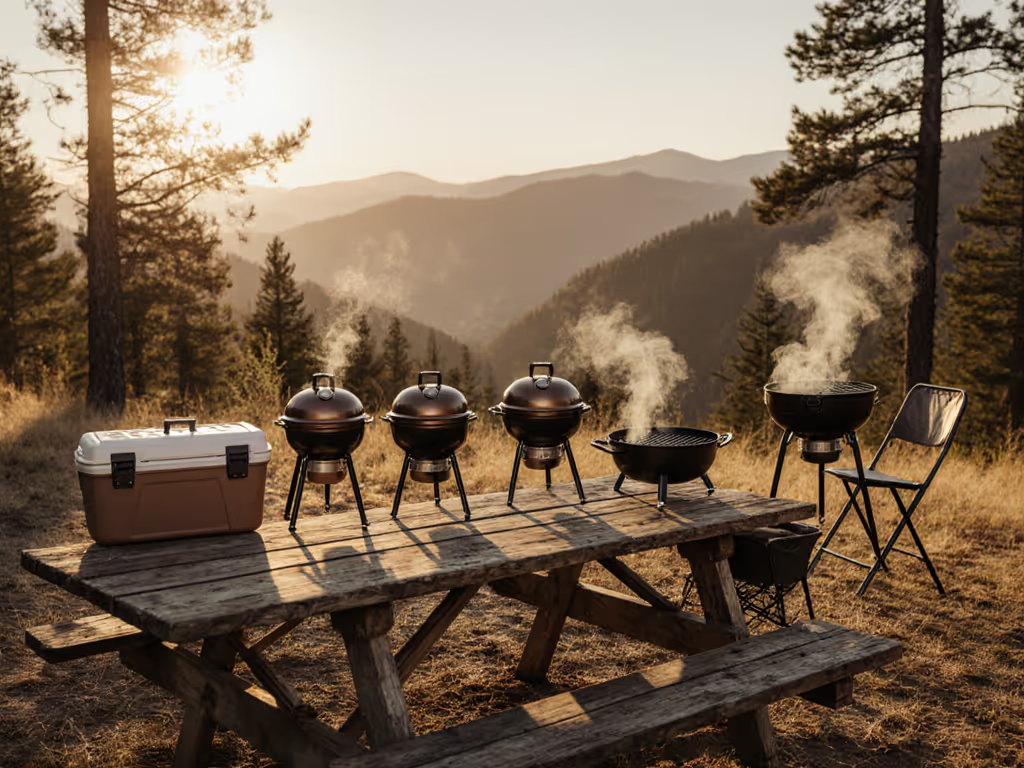
Why a roaster portable bbq Matters When You Live Outside
If you spend weekends chasing summits, surf, or stadium parking lots, the right roaster portable bbq can turn a simple stop into a memorable meal. You want fast setup, steady heat, and gear that shrugs off dust, wind, and bumps in the road. Yet choosing a compact fold-flat grill from a long list of specs is tough, especially when regulations, fuel limits, and weather change by the hour. That is exactly where Searcase steps in with field-tested reviews and side-by-side data that reflect real trail conditions rather than perfect backyards.
Think of your grill as a cooking system, not a single gadget. The core unit, the fuel, the ignition, the cookware, and even your cleanup plan must work together for searing, roasting, or low-and-slow nights. This guide synthesizes months of Searcase testing across beaches, high desert plateaus, and alpine pullouts to help you decide with confidence. If you're new to portable grills, start with our portable grill types and use-case guide. You will see what actually fits in a daypack, which designs survive dust, and how charcoal and gas compare in flavor when you have ten hungry hikers waiting.
Along the way, we will add hard-won techniques for altitude and crosswinds, plant-based and conventional cooking insights, and practical fixes if your portable setup stalls mid-cook. Expect clear tables, specific examples, and a troubleshooting section you can save offline. By the end, you will know what to buy, what to pack, and how to keep the flames (and the fun) under control, wherever you set your grate.
Top Field-Tested Picks: Compact Travel Grills That Earned Our Trust
Great portable cookers earn their keep by staying simple under stress. In Searcase trials, we grade products on packability, setup speed, thermal stability, and safety at campgrounds and dispersed sites. For example, a fold-flat charcoal hibachi shines for skewers and fast sears, but a lidded compact charcoal grill can transform tougher cuts into tender, shareable slices when used for low-and-slow cooking. When space and time are tight, we prioritize designs with tool-free assembly, stable legs, and heat diffusers that minimize flare-ups, especially important for parks with strict ember control rules.
Below is a condensed snapshot of our favorite categories after dozens of cooks in wind, rain, and on uneven ground. Data reflects median results from Searcase field logs. Weight ranges include grates and typical accessories. Packability comments reflect whether units slid into a standard 40-liter pack or required a tote. Use this as a starting point, then pair with your fuel access and meal style, whether carnivorous feasts, plant-forward kebabs, or meatless links that still crave real sear marks.
| Type | Weight | Setup Time | Packability | Heat Range | Fuel | Best For | Searcase Notes |
|---|---|---|---|---|---|---|---|
| Fold-Flat Charcoal Grill | 4–8 lb | 3–5 min | Slides in 40 L pack | Med–High; direct heat | Charcoal | Skewers, quick steaks, veg | Top sear; needs coal management in wind |
| Compact Charcoal Kettle | 8–14 lb | 6–10 min | Tote or trunk | Low–Med steady | Charcoal/wood | Whole chickens, small roasts | Good for indirect heat and steady roasts; balance and wind matter |
| Lidded Charcoal Grill (Indirect/Two-Zone) | 15–30 lb | 6–10 min | Car/van only | Low–High via fuel load | Charcoal | Set-and-forget roasts, larger groups | Excellent control; mind ash and weight for hikes |
| Tabletop Gas Grill | 10–20 lb | 2–4 min | Tote or crate | Med–High adjustable | Propane | Tailgates, fast weeknights | Instant heat; check local canister rules |
| Alcohol Stove + Grill Top | 1–2 lb | 1–2 min | Ultralight pack | Low–Med | Alcohol | Minimalist solo cooks | Quiet and light; not ideal for big sears |
Two case notes stand out. First, a lidded charcoal kettle used for low-and-slow roasts handled two trussed birds at sea level, but at 7,500 feet with gusts it needed rebalancing and a windbreak to maintain consistent cooking. For step-by-step windy-day fixes, see 7 proven wind-control techniques. Second, our favorite fold-flat charcoal rig produced the best plant-based sear on marinated tofu and thick mushroom caps when we elevated the grate one notch and let coals ash over fully. Your gear choice should follow your menu, your vehicle space, and the conditions you cook in most often.
Fuel Showdown: Charcoal vs Gas vs Wood vs Alcohol
Flavor, control, and logistics begin with fuel. For a deeper fuel comparison across charcoal, gas, and electric, see our fuel types comparison. In Searcase blind tastings, many tasters favored the smoky character of charcoal for roasts and the searing power of lump charcoal for quick high-heat work. Gas excelled when speed mattered; we logged the fastest time-to-food with tabletop propane at under 8 minutes to first bite. Wood is unbeatable for ambience and rich bark but requires more vigilance for embers and local restrictions. Alcohol setups win for weight and simplicity but are limited for heavy searing. The smart move is to match fuel with your venue and meal plan, then pack a backup ignition method and consider a spark arrestor screen where required.
Beyond flavor, think about rules and refills. Many public lands restrict open wood fires during dry spells, yet permit charcoal in enclosed grills or gas with an on-off valve. Some electric accessories require power, which is simple in a van with an inverter and trickier on a small car battery. Across dozens of trips, we found the calmest cooking days came from teams who made a fuel decision before packing, adjusted for weather alerts the night before, and carried one small butane lighter and one ferro rod as redundancy.
| Fuel | Flavor Profile | Temp Control | Setup Speed | Smoke/Emissions | Cost/Hour | Field Notes |
|---|---|---|---|---|---|---|
| Alcohol | Neutral to mild | Limited | Fast | Low | $ | Quiet and light; not ideal for big sears |
| Charcoal | Bold, classic | Manual vents | Moderate | Moderate | $ | Top sear; mind ash control in wind |
| Gas (Propane) | Neutral | Good with knobs | Fast | Low | $$ | Speed king; check canister rules and PSI [pounds per square inch] ratings |
| Wood | Rich, variable | Challenging | Slow | Higher | $ | Most regulated; excellent bark, requires vigilance |
Searcase also runs flavor tests for plant-based proteins, because your grill should deliver for everyone at the table. On managed charcoal setups, marinated tempeh held moisture best during 45-minute roasts, while direct lump charcoal gave portobellos more char-driven depth in under 10 minutes. For mixed menus, consider a two-zone setup: fast sear over charcoal for vegetables and thin cuts, and a low, indirect zone for thicker roasts. Quick tip: a small cast-iron skillet on the grate converts flare-prone foods into controlled, crispy finishes without losing the smoke that makes outdoor cooking special.
Altitude, Wind, and Weather: Techniques That Keep Heat On Your Side
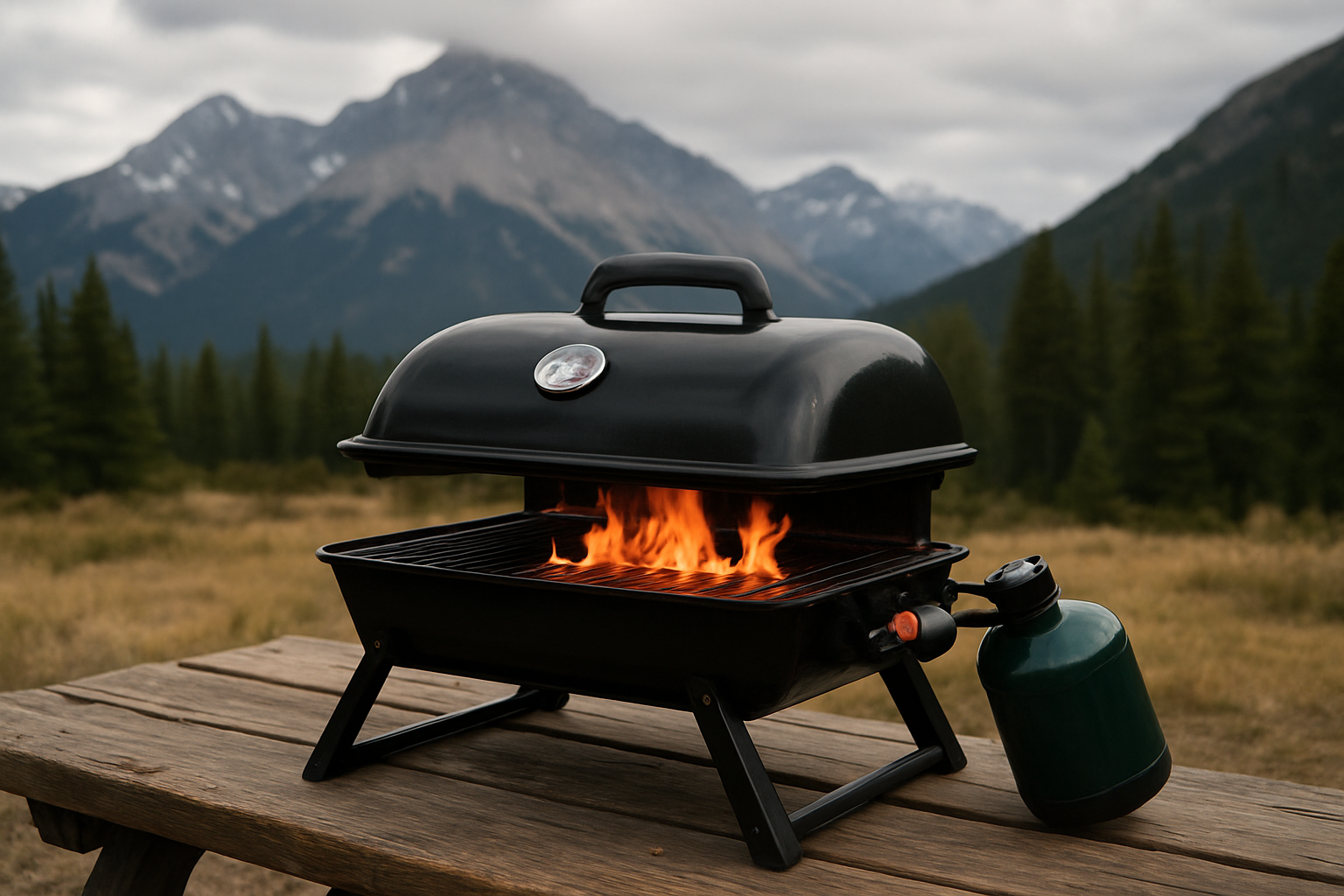
Air density, humidity, and oxygen availability shift with elevation and weather, and your grill will tell you immediately. At higher altitudes, we observed longer ignition times, weaker chimney draws, and some electric accessories working harder under load. Searcase’s altitude playbook starts with airflow: open vents slightly more, preheat longer, and use a taller windbreak formed from rocks or a folded foil shield placed a safe distance from flames. If an accessory stalls, rebalance the load and reduce the distance between food and coals to ease torque demand without spiking temperature too quickly.
Wind is the invisible chef that either turbocharges or steals your heat. In gusty conditions, align your cooker so intake faces the breeze and exhaust points leeward to stabilize flow. For charcoal, build a coal wall on the windward side to prevent runaway temps; for gas, watch for gust-induced flare-ups and keep a spray bottle to tame fat drips safely. Rain and cold sap energy, so budget 10–20 percent more fuel and carry a dry bag for kindling or spare gear. Importantly, avoid makeshift covers that trap carbon monoxide [CO] - ventilation is non-negotiable, even during squalls.
Case in point: during a shoulder-season camp at 6,800 feet with 18 mile per hour gusts, our team roasted two spatchcocked chickens on a compact covered grill. The first attempt struggled until we added a three-panel wind screen, lowered the food two inches, and redistributed coals in a horseshoe. That change stabilized pit temps around 350 degrees Fahrenheit and kept any electric accessories in their efficiency band. The lesson translates to any cooker - control air first, then adjust distance and fuel to meet your target temperature with minimal babysitting.
Setup, Safety, and Leave-No-Trace Cleanup You Can Finish in Minutes
Fast setup keeps the group fed and reduces risk. Searcase times every step from trunk open to food on grate, and the best kits assemble in under five minutes without tools. Before you spark anything, confirm local fire status and rules for gas canisters, ash disposal, and ground contact. Many parks require cooking on established pads or with legs high enough to prevent scarring. A small heat shield or foldable table solves this, and silicone gloves plus a long-handled tong cut mishaps. Simple, repeatable steps free you to focus on flavor instead of fiddling.
Cleanup is where responsible grillers stand out. For a fast, compliant routine, follow our portable grill cleaning guide. Public land agencies report that improper ash disposal sparks thousands of small incidents annually, so we pack a lidded metal can and wait until ash is cold to the touch. For charcoal, drown, stir, and drown again, then strain out unspent chunks for next time. For gas, wipe grates while warm, cap canisters, and check for leaks with a soapy water test. Our crews follow Searcase’s five-point, compliant cleanup plan and we recommend saving it on your phone for the next outing.
- Extinguish completely: verify no visible embers, then confirm cool-down.
- Contain waste: use bags and a metal ash can; never bury hot ash.
- Pack out grease: absorb with coffee grounds or sand, then bag.
- Wipe surfaces: biodegradable wipes for grates and handles, then pack them out.
- Final site scan: look for micro-litter like ties, toothpicks, and foil.
These routines take five to seven minutes and protect access for everyone. As a bonus, consistent cleanup extends gear life by reducing corrosive buildup, which means fewer repairs on the road. That said, things still break. In the next section we cover the most common failure points, with fixes you can do in camp and permanent repairs to handle at home, backed by Searcase’s portable grill repair guides and troubleshooting tips.
Repair and Troubleshooting in the Wild: Fix It, Finish Dinner, and Keep Moving
Portable grills live hard lives: dust in bearings, bent grates from hasty packing, and regulators rattled around in totes. Searcase’s repair library focuses on the most common, high-impact issues that stop a cook. We field-test each fix under real conditions, from a windy trailhead to a drizzle-soaked tailgate, and categorize by speed so you can triage under time pressure. Below is a quick reference that pairs symptoms with likely causes, simple tests, field fixes, and long-term solutions you can handle with basic tools.
| Symptom | Likely Cause | Quick Test | Trail Fix | Permanent Repair |
|---|---|---|---|---|
| Accessory motor stops or stutters | Unbalanced load, weak batteries, grit in gearbox | Run motor unloaded; if smooth, issue is load | Rebalance load; shield from wind; swap batteries | Open and clean gears; replace motor if noisy under load |
| Low flame on gas | Regulator safety lock, cold canister, clogged orifice | Reset by disconnecting, wait, reconnect slowly | Warm canister in pocket; clear spider webs with brush | Replace regulator; ultrasonic clean jet |
| Uneven charcoal heat | Piled coals, clogged vents, wind tunneling | Check ash buildup and vent travel | Rake into two zones; clear ash; add windbreak | Install new grate; add adjustable baffles |
| Igniter/ignition module won't spark | Dead battery, wet igniter, loose connection | Try manual lighting; inspect electrode | Use a long lighter or match; replace battery or dry electrode | Replace igniter assembly; reseal wiring |
| Flare-ups scorch food | Grease channel clogged, food too close | Lift grate; inspect deflector and tray | Move to indirect zone; add drip pan with water | Deep clean; install upgraded deflector |
Here is a simple decision path that saves dinners. If a motorized accessory stalls, first stop the cook and rebalance: ensure clamps are tightened and the load is centered. Then shield the motor from direct heat and wind, and reduce the arm distance to lessen torque if applicable. If the motor still strains, finish the final minutes manually - turning or rotating by hand - or move food to indirect heat to finish gently. For gas, when flames feel weak, depressurize the system by disconnecting the regulator for a minute, reconnect slowly to avoid the safety lock, then relight and test on low before climbing to sear.
Preventive care pays back more than any emergency hack. Before each trip, Searcase checklists prompt you to lubricate bearings with food-safe oil, verify battery levels, and inspect electrical connections for corrosion. For charcoal, carry a compact grate scraper and spare fire starters; for gas, pack spare seals and a regulator wrench; for electric accessories, bring a small power bank that can deliver a steady 2 amperes for controller boots. Document issues in a notes app - pattern recognition is unbeatable for preventing repeat failures. When you need deeper help, Searcase’s Portable grill repair guides and troubleshooting tips walk you through component-level fixes step by step, with clear diagrams and estimated time-on-task.
Menus That Travel: Real-World Meal Plans for Mixed Crowds
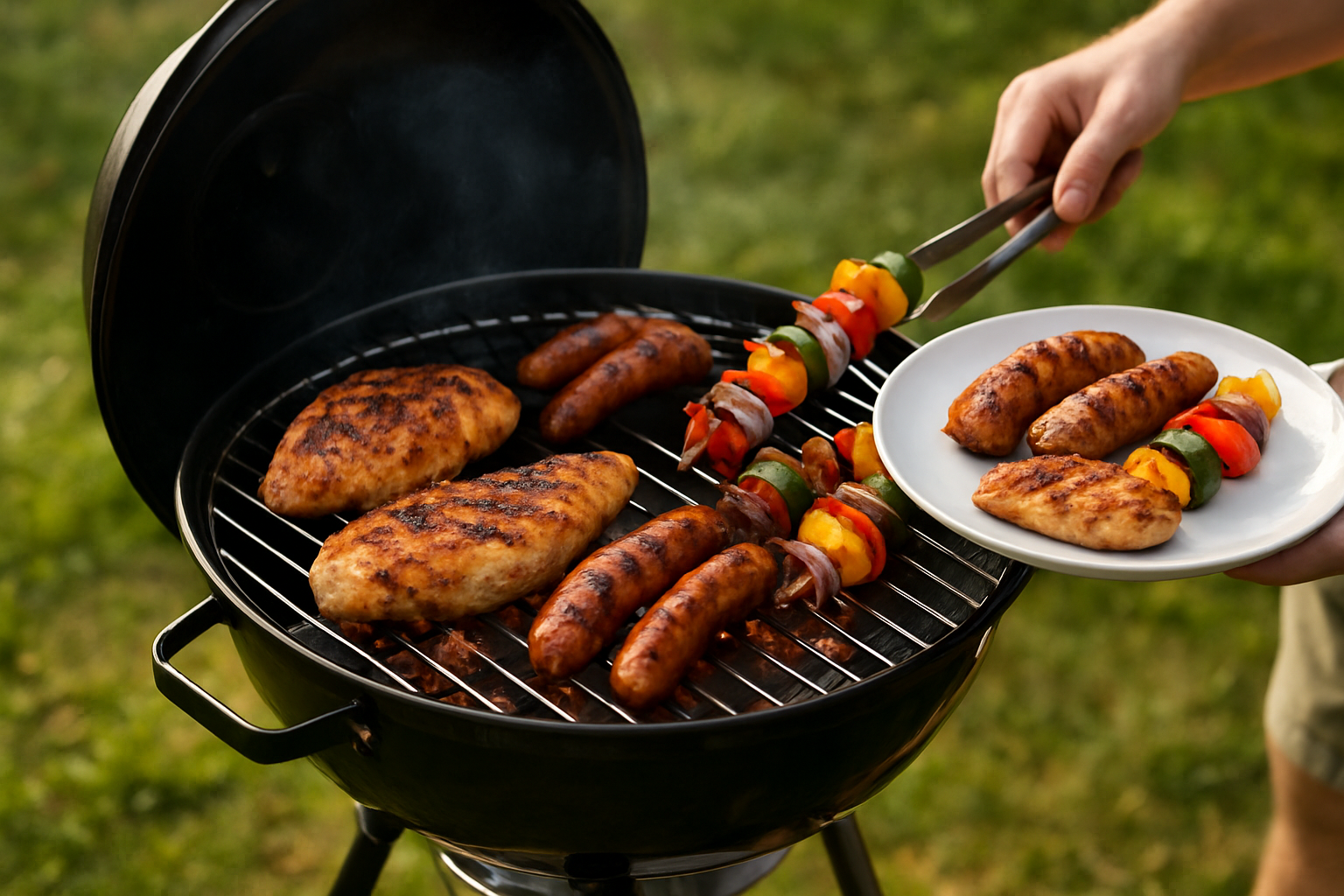
A great portable cooker serves up joy to omnivores and vegans alike. In split-menu trials, Searcase teams cooked a spatchcocked citrus chicken alongside smoky cauliflower “steaks” on the same coal bed by using a two-zone horseshoe layout. The key was timing: start the roast first, then sear plant-based items during the last 12 minutes while juices render and the bird finishes. For tailgates, tabletop gas plus a cast-iron griddle delivered smash burgers and tofu patties with equal crisp - flipping every 60 seconds helped keep edges lacy and interiors juicy without flare-ups.
For hikers chasing protein without bulk, skewers shine. Pre-threaded lamb, onion, and pepper skewers share grill space with soy-marinated tempeh on a fold-flat charcoal rig, and both finish within 10 minutes using direct heat. Add a small saucepan to warm glaze off-heat, brushing in the last minute for a glossy finish. Sides should be just as packable: couscous hydrates quickly, and pre-washed greens tossed with lemon and oil brighten the plate without creating messy dishes. You can eat like royalty from a trailhead tailgate with a minimal kit.
Finally, think about flavor layering. Charcoal gives a reliable baseline smoke for roasts, then a quick charcoal kiss at the end creates edge-to-edge appeal. A handful of fruitwood chips in a foil pouch on a gas grill adds gentle perfume, though you will still rely on Maillard browning for depth. Keep sauces simple and travel-safe - harissa paste, gochujang, and jarred chimichurri transform vegetables and proteins fast. When your cooking system, menu, and environment align, your “portable” setup feels like a proper backyard kitchen, only with better views.
Choosing Your Setup With Confidence: A Searcase Framework
Still undecided? Use this simple framework Searcase uses in reviews and buyer consults. Begin with your primary constraint - car space, hike distance, or time to first bite. Then pick a heat strategy: direct sear for quick meals, indirect for roasts, or hands-off even cooking for low-maintenance finishes. Match fuel to venue rules and power access, choose a cooker that meets your constraint, and finally add the two accessories that eliminate your biggest risk. For many, that is a windbreak and a digital thermometer; for those who want steady roasts, it is spare batteries and a good lid or cover.
To visualize trade-offs, imagine three sliders: portability, precision, and capacity. Slide portability to max and you are looking at alcohol stoves or ultralight charcoal frames - great for two people and simple menus. Push precision and capacity higher and lidded charcoal or tabletop gas units win, especially for groups of six to ten. Lidded grills sit in the middle: more to pack than a fold-flat, less fussy than full-sized rigs, with show-stopping results when balanced and shielded well. Searcase’s field-tested scoring helps you see where each product lands on these axes before you commit.
Last, plan for the boring but essential: maintenance and parts. Can you source a regulator, gasket, or igniter quickly? Are screws standard sizes you can replace from a hardware store? Does the brand publish exploded diagrams? Searcase favors products with transparent parts listings and simple fasteners because that keeps gear in service and out of landfills. When you do need a fix, our Portable grill repair guides and troubleshooting tips make the path from failure to feast as short as possible.
Quick Reference: Pack List for Smooth Roasting and Grilling
- Heat management: chimney starter, windbreak panels, digital thermometer.
- Safety: gloves, fireproof mat, spray bottle, first aid kit.
- Fuel and power: extra charcoal or canister fuel, charged power bank, spare batteries.
- Cooking tools: long tongs, instant-read thermometer, basting brush, small skillet.
- Cleanup: metal ash can, biodegradable wipes, trash bags, absorbent for grease.
From Trail to Table: Stories That Prove the System Works
On a two-day desert loop, four hikers brought a fold-flat charcoal grill and a compact lidded roaster. Night one was all plant-forward: cumin mushrooms, charred scallions, and glazed tofu, finished in under 25 minutes while the sun lit up canyon walls. Night two starred a trussed pork shoulder roasted indirectly in a lidded grill. Wind picked up, and the cook required more heat management until we added a knee-high windbreak and shifted coals into a horseshoe. The shoulder finished with crackling edges and a juicy center, and we ate lettuce wraps with lime crema under a sky thick with stars.
A different weekend, we tailgated at altitude before a mountain bike race. Time was tight, so a tabletop gas grill ruled. Burgers and veggie patties went down at minute four, onions in a skillet at minute five, and by minute 12 we were feeding eight people. When a regulator stuttered mid-cook, the soapy water test showed a loose connection, and a slow reconnect reset the safety. The lesson: have a plan that fits the day, and bring one or two fixes you can use blindfolded. Simplicity wins under pressure, and practice makes it second nature.
Across all these miles, Searcase’s approach stayed the same: test in the wild, record everything, and translate results into practical choices. That is how our recommendations keep pace with real conditions and how our community keeps learning from each cook. Whether your heart is in slow roasts or fast skewers, there is a rig that fits, a fuel that flatters your menu, and a set of small habits that turn every stop into a story worth retelling.
roaster portable bbq: Your Next Step
You now have the frameworks, data, and field wisdom to choose a kit that fits your routes and your recipes. From fuel comparisons and flavor tests to altitude tactics and cleanup plans, you have seen how small decisions add up to reliable meals anywhere. And when gear hiccups happen - as they eventually do - you also know how to diagnose and fix the most common issues fast so dinner does not derail your day. Searcase is here to help you keep cooking without compromise.
Final Thought Starters
- What is your primary constraint: weight, time, or group size?
- Which fuel aligns with your most frequent destinations and rules?
- What two accessories would eliminate your biggest risk this season?
Gear evolves, trips change, and skills grow; Searcase stays in the field to update the playbook so your next roaster portable bbq delivers an even better meal in an even better place.
One-sentence recap: The right portable roaster, matched with smart fuel and field fixes, turns any pull-off into a capable kitchen with consistent, confident results. Imagine dialing in heat and airflow in minutes, then plating food that tastes like home under open skies. Where will your next roaster portable bbq take you, and which challenge do you want your gear to conquer first?
Additional Resources
Explore these authoritative resources to dive deeper into roaster portable bbq.
Master Roaster Portable BBQ [barbecue] Choices with Searcase
Outdoor enthusiasts, campers, hikers, and tailgaters: Searcase offers Portable grill repair guides and troubleshooting tips plus field-tested comparisons and reviews to pick the right grill and cook seamlessly anywhere.
Related Articles

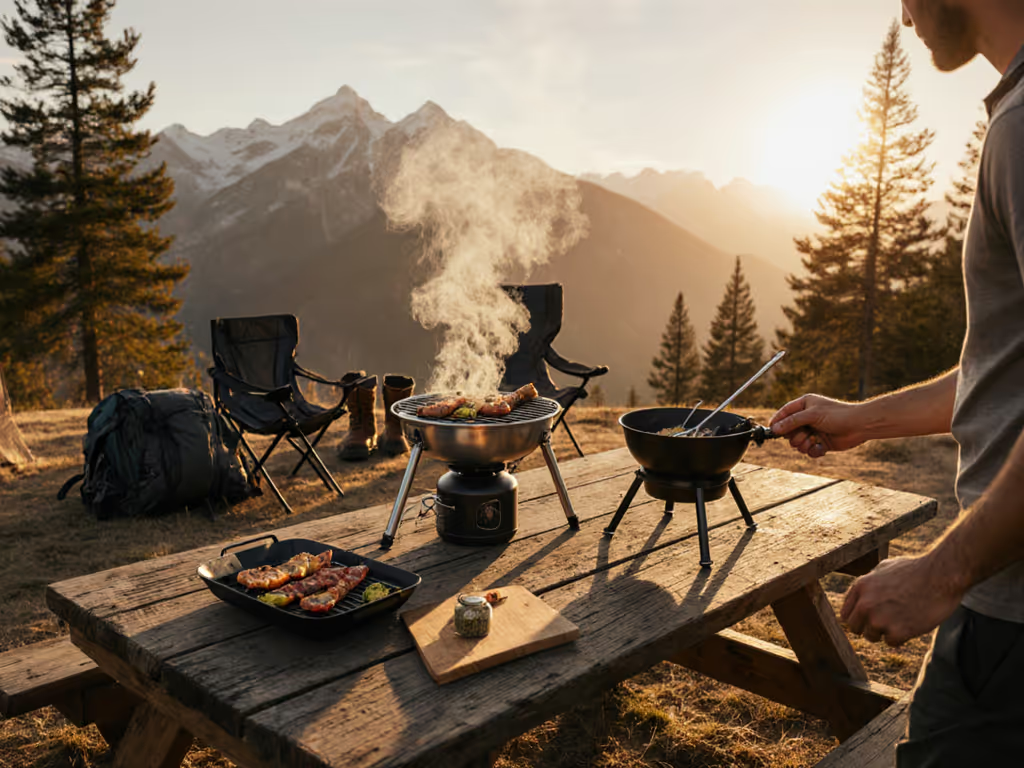
Field-Tested Portable Grills for 2025-11-12: Packability, Setup Speed, and Best Picks for Campers, Hikers & Tailgaters
Master the essentials of Field-Tested Portable Grills for 2025-11-12: Packability, Setup Speed, and Best Picks for Campers, Hikers & Tailgaters so you can…
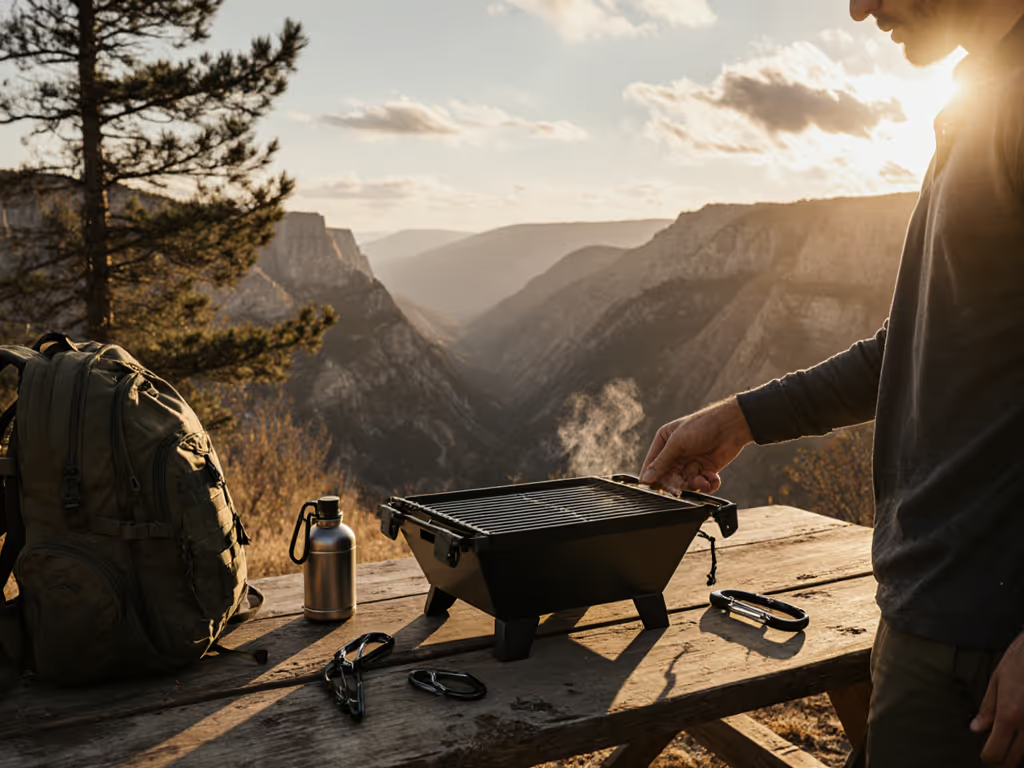
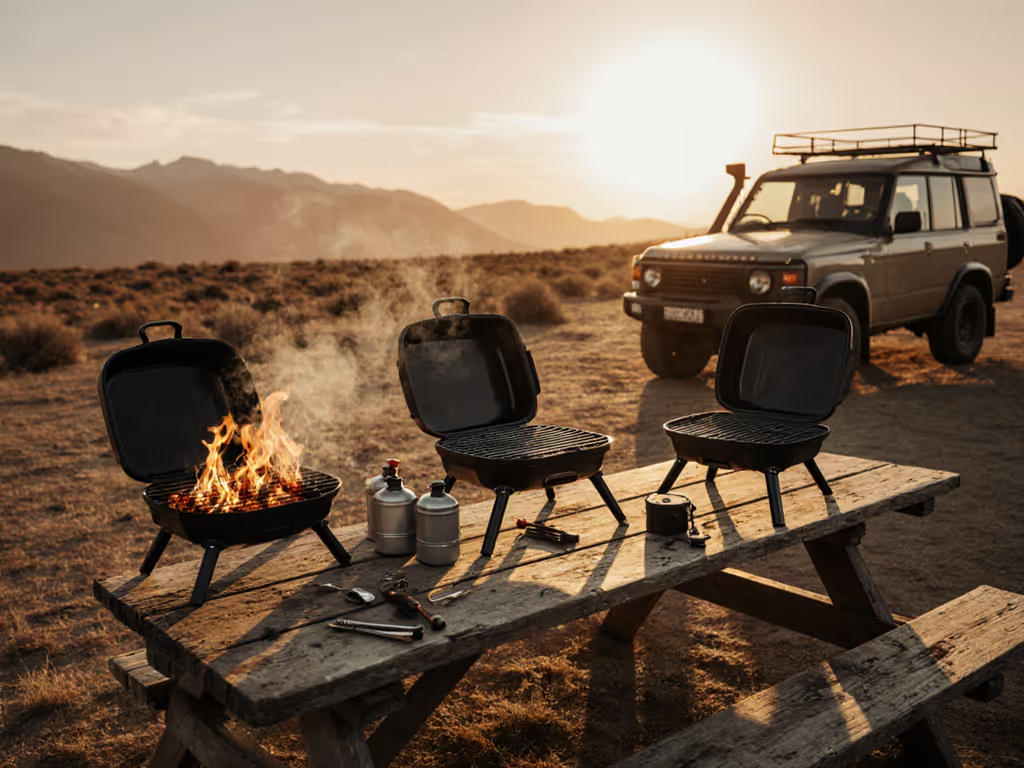
Searcase’s Field-Tested Portable Grills for 2025-11-10: 10 Packable Picks with Lightning-Fast Setup and Real-World Performance
Master the essentials of Searcase’s Field-Tested Portable Grills for 2025-11-10: 10 Packable Picks with Lightning-Fast Setup and Real-World Performance so…
